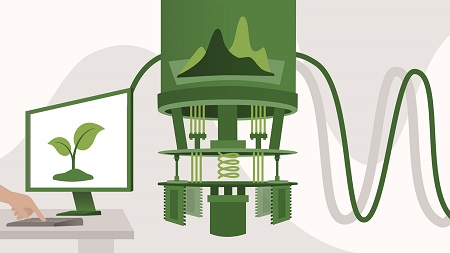
English | MP4 | AVC 1280×720 | AAC 48KHz 2ch | 1h 25m | 684 MB
Classical computing, which gave us the current digital age, is about to be displaced by a more exciting, powerful, and radically different form of computing. This technology—known as quantum computing—operates under completely different scientific principles and has the potential to provide a massive technological leap forward that will enable breakthroughs in artificial intelligence, medicine, chemistry, space capabilities, mixed reality, and so much more. Those left behind will find it hard to catch up. Learn all about it here, as well as how to apply quantum computing to your own (and your organization’s) outlook for the future. In plain language, instructor Jonathan Reichental lays out what quantum computing is and details its applications, opportunities, and risks.
Topics include:
- A simple explanation of classical computing
- Drivers of a next generation of computing
- The basics of quantum mechanics
- How does quantum computing work?
- Superposition in quantum computing
- Quantum computing implementations
- Current and potential new uses for quantum computing
- Opportunities for enterprises and individuals
Table of Contents
Introduction
1 A new era of computing is emerging
Understanding Classical Computing
2 The current computing age
3 A brief history of the third industrial revolution
4 A simple explanation of classical computing
5 Drivers of the next generation of computing
What Is Quantum Computing
6 What exactly is this quantum stuff
7 A brief timeline of quantum research to date
8 What is quantum computing
9 Superposition The core idea in quantum computing
10 Entanglement and other fun concepts
Applications of Quantum Computing
11 The current state of quantum computing research
12 Examples of quantum computing implementations
13 Quantum computing applications now and in the future
Opportunities and Risks of Quantum Computing
14 Opportunities for enterprises and individuals
15 Quantum computing in the fourth industrial revolution
Conclusion
16 Final thoughts and next steps
Resolve the captcha to access the links!